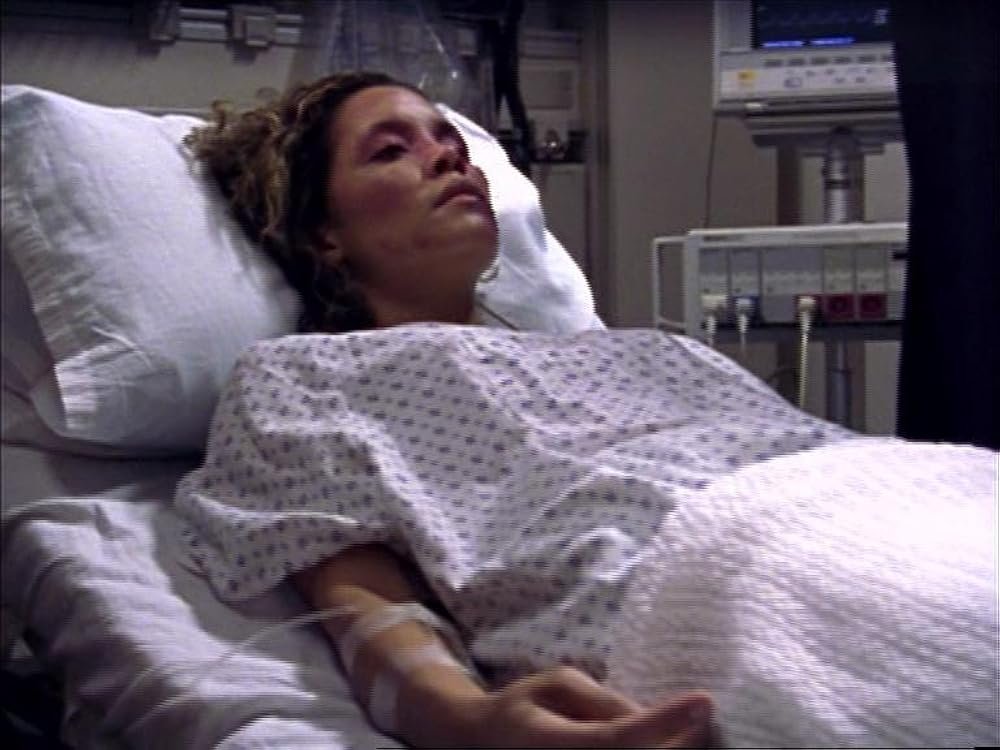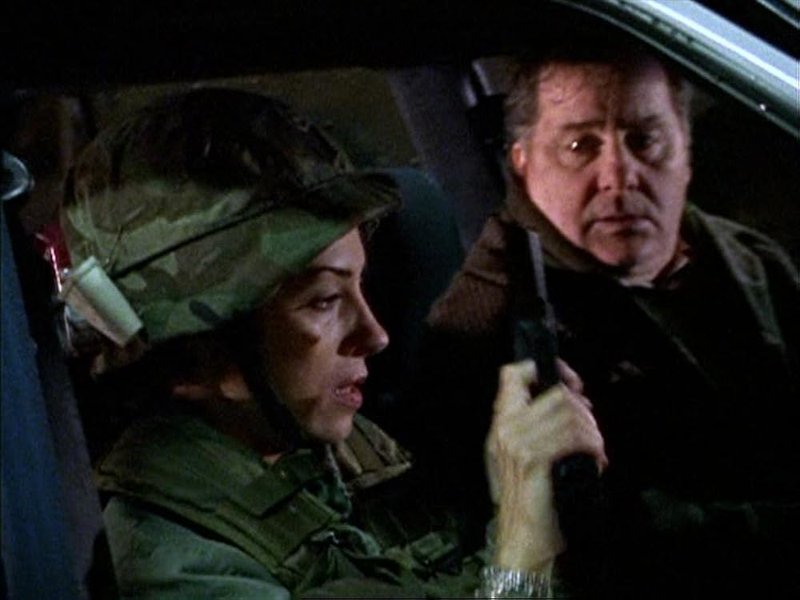Television Review: Shades of Grey (Homicide: Life on the Street, S7X10, 1999)
0 comments

Shades of Grey (S07E10)
Airdate: 8 January 1999
Written by: T. J. English
Directed by: Adam Bernstein
Running Time: 45 minutes
The world has undeniably evolved over five years, yet some wounds fester with stubborn persistence. Shades of Grey, the episode of Homicide: Life on the Street’s final season, underscores this grim truth. Set in 1999, it revisits the Baltimore Homicide Unit at a crossroads, tasked with investigating a case that echoes the racial tensions of its past. A bus driver’s death, initially perceived as racially motivated, spirals into a potential race riot, mirroring the societal fractures that have haunted the city—and the show—for decades. The episode’s narrative arc loops back to themes first explored in the series’ second season, suggesting that progress is an illusion when systemic inequities remain unaddressed.
Five years prior, in 1994’s and , Homicide dissected the fallout of a police killing of a Black man, exposing the corrosive impact of racial bias on public trust. Shades of Grey resurrects this framework, framing a new incident through the same lens. While the plot diverges—this time involving a white bus driver’s accidental death—the parallels are striking. Characters like Officer Hellriegel, whose complicity in past police misconduct resurfaces, tethers the episode to its roots. This deliberate callback underscores the cyclical nature of racial strife, suggesting that institutions and individuals alike are trapped in patterns of repetition.
The catalyst for chaos is a mundane yet incendiary moment on a Baltimore Transit Authority bus. Patrick McCusker, a white driver with little empathy for his predominantly Black passengers, becomes distracted by two young men—a Jamaican immigrant and an African American resident—engaged in a boombox showdown. The clash, while trivial, distracts McCusker long enough to send him careening into Marletta Manley, a Black woman crossing the street. The crowd, already simmering with distrust, assumes the collision was intentional. McCusker is beaten to death, and the bus is vandalised, sparking riots.
The Homicide Unit arrives to find two tragedies: McCusker’s corpse and the body of Paxton Smart, a Jamaican drug dealer killed nearby. Smart’s death links to Hellriegel, whose history of brutality and cover-ups makes him a prime suspect. Detectives Lewis and Shepard uncover a police uniform button at the scene, pointing to Hellriegel’s involvement. Yet, securing a conviction hinges on Desmond Clements (Chuck Jeffreys), a witness whose testimony requires navigating a fraught negotiation. Clements’ violent retaliation against Shepard—a brutal beating that leaves her hospitalised—and the theft of her gun add layers of personal stakes. While Lewis’ ultimatum to the Jamaican community to return the weapon succeeds, the episode’s resolution feels rushed, prioritising procedural closure over emotional depth.
The episode’s most compelling tension emerges in its interrogation of racial dynamics. Detective Garty, a white officer, insists the incident was racially motivated, while Mike Giardello, a Black FBI agent with academic credentials, argues the truth is murkier. Their debate mirrors broader societal divides: Garty’s visceral reactions versus Giardello’s analytical detachment. The investigation ultimately reveals the tragedy’s accidental origins—Marletta’s fatal misstep stemmed from her unfamiliarity with left-hand driving in her native Jamaica—not racial malice. Yet the riots and Hellriegel’s actions prove that context matters more than intent. By the episode’s end, both detectives concede that race both obscured and amplified the tragedy, a nuanced acknowledgment of how systemic issues warp individual actions.
Writer T.J. English crafts a script that balances empathy with unflinching realism. The episode avoids moralising, instead presenting a mosaic of perspectives: the bus passengers’ rage, the detectives’ ideological clashes, and even Marletta’s self-blame. The Black community’s internal divisions—between Jamaican immigrants and native African Americans—add another layer, illustrating that prejudice transcends racial binaries. The resolution, while tidy, retains complexity: a corrupt cop is exposed, a witness testifies, and the stolen gun is returned. Yet Lewis’ frustration over leniency for Clements—whose testimony secures Hellriegel’s downfall—hints at unresolved tensions.
The episode’s greatest weakness is its overcrowded narrative. Too many threads—Hellriegel’s motives, Shepard’s subplot, the Jamaican drug trade—compete for attention, forcing key details into clunky exposition. Hellriegel’s backstory, crucial to his actions, is summarised in dialogue rather than shown, weakening the emotional stakes. Similarly, Shepard’s injury and the stolen gun feel gratuitous, likely an attempt to justify her character’s presence after fan backlash over the casting of fashion model Michael Michele. While her hospital scene underscores her resilience, it strains credibility and distracts from the central racial themes.
Despite its flaws, Shades of Grey resonates with startling relevance. Its closing scene—a perp walk of three Black men and Hellriegel, cuffed together for public television—symbolises the episode’s hopeful but fragile vision of justice transcending race. Colonel Barnfather’s pragmatic gesture, though cynical, diffuses tension by showcasing accountability. Yet, in today's era of social media tribalism and viral injustices, such unity feels distant. The phrase “No justice, no peace,” coined in the episode, now echoes through protests over modern police brutality, underscoring how little has changed.
Shades of Grey is a flawed but vital episode, a testament to Homicide’s enduring sharpness in dissecting societal rot. Its ambition occasionally overwhelms its runtime, yet its exploration of racial nuance and institutional failure remains unmatched. The Homicide Unit’s journey—from confrontation to uneasy resolution—reflects a world still grappling with the same cycles of violence and misunderstanding. While the show’s era may feel distant, its themes are alarmingly contemporary, a reminder that progress requires more than hope—it demands structural change. In an age where social media amplifies division rather than resolution, the episode’s perp walk feels like a relic of a time when public accountability, however imperfect, could still unite a fractured city. Today, that unity seems further away than ever.
RATING: 7/10 (+++)
Blog in Croatian
Blog in English
InLeo blog
LeoDex:
Hiveonboard:
Rising Star game:
1Inch:
BTC donations: 1EWxiMiP6iiG9rger3NuUSd6HByaxQWafG
ETH donations: 0xB305F144323b99e6f8b1d66f5D7DE78B498C32A7
BCH donations: qpvxw0jax79lhmvlgcldkzpqanf03r9cjv8y6gtmk9




Comments